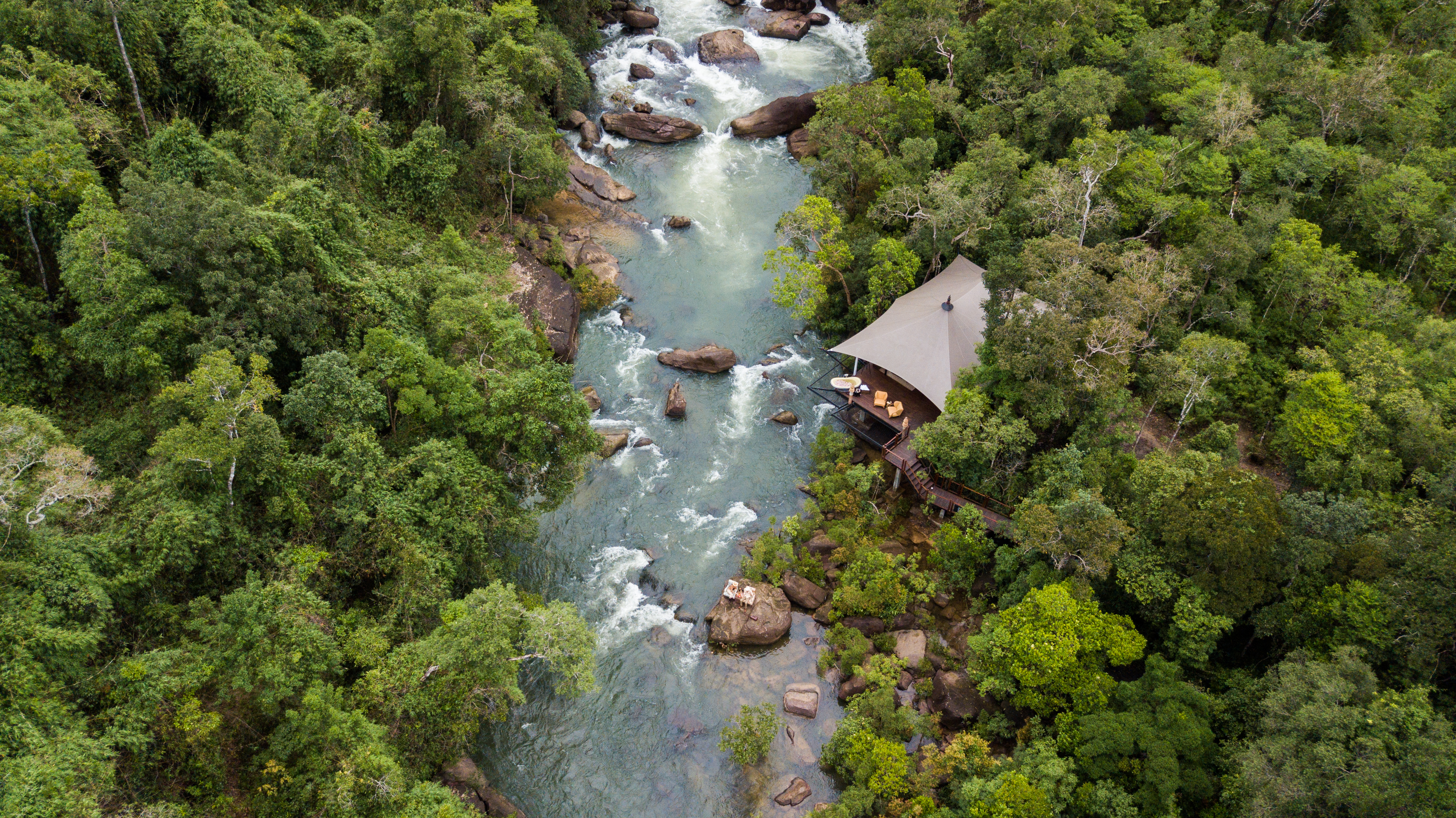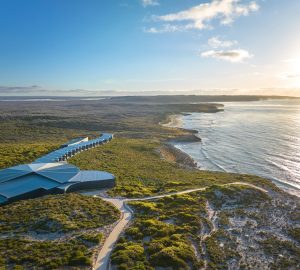Adventures In The Wild
Stunning design and serious conservation make a stay at Shinta Mani Wild unforgettable.
When it comes to dramatic arrivals, nothing quite beats the zip-line entry into Shinta Mani Wild, renowned design-architect Bill Bensley’s newest luxury tented property.
Child’s play, I thought, until I found myself 30 metres above ground with a serious-looking staff giving me safety instructions while I strapped on my helmet and safety harness.
Moments later, I was whizzing 350 metres into a horizon lined with lush tree canopies below and blush pinks from the setting sun above. With a final adrenaline rush over a raging waterfall, I land at the resort’s aptly named Landing Zone Bar, where an icy homemade pineapple cordial with ginger ale, soda and a dash of rum awaits in the hands of a smiling Bensley Butler. Tarzan would have approved.
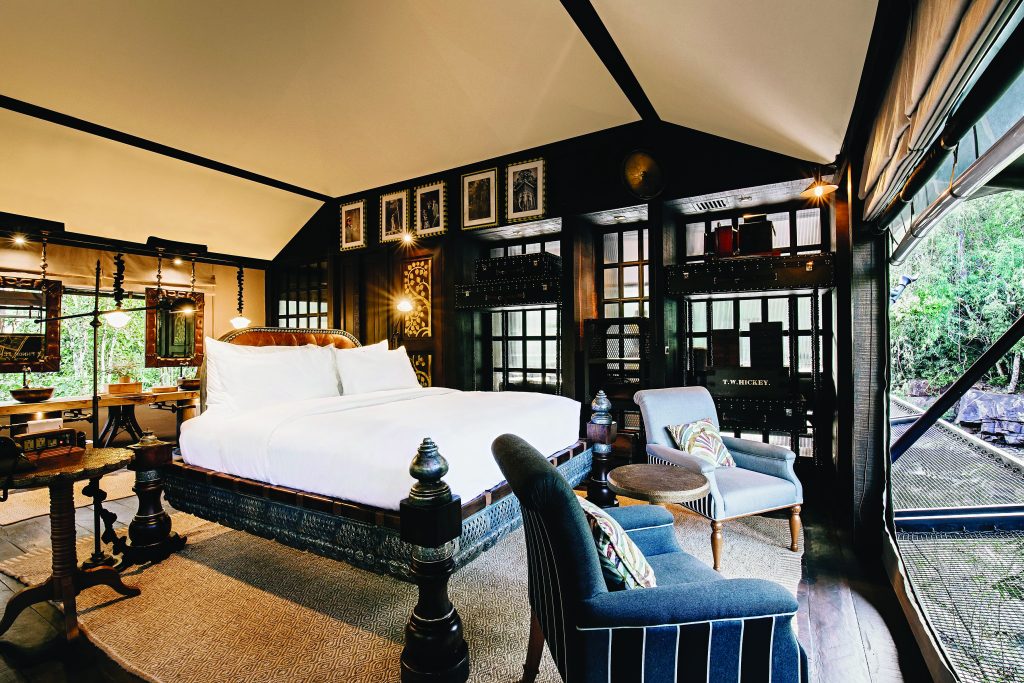
Sustainable luxury
Wild, which is the second property in the Bensley Collection after Siem Reap’s Shinta Mani Angkor, is located in a 350-hectare valley, surrounded by Southern Cardamom, Kirirom, and Bokor national parks in the southern part of Cambodia. Reaching there is no walk in the park though: after landing at Phnom Penh airport, it is a four-hour drive, including 20 minutes on bumpy country side tracks, before a jeep transfer to the zip-line platform.
The land that the resort sits on was originally put on auction for a logging concession, with a requirement from the local government that the land would be economically developed. Bensley and his Cambodian business partner, Sokoun Chanpreda, managing director of Hospitality Management and Development Asia (HMD Asia) won the bid with the intention of conserving it, and proceeded to build a low-impact camp that would generate funds to protect the surrounding area and provide employment for the local communities.
Construction took nine years, resulting in 14 one-bedroom tents and one two-bedder lining a 1.5km stretch of river and waterfalls, all built on stilts to minimise impact on the land and to avoid disturbing existing animal trails and diverting natural waterways.
Each tent has a secondary interior ceiling membrane that acts as an insulating layer to make it more energy efficient, and its own waste water treatment to ensure that all water coming out of the tent goes safely back into nature.
Bensley’s signature rich fabrics, layered textures, bespoke furnishings and whimsical details such as travel décor items come together to weave a romantic tale of what a luxury safari would have been like during Jacqueline Onassis’ tour of Cambodia in 1967. Topping it all is the Instagram star of an outdoor bathtub, best for early morning or evening soaks with a bubbly in hand and the sounds of rushing waters as a background track.
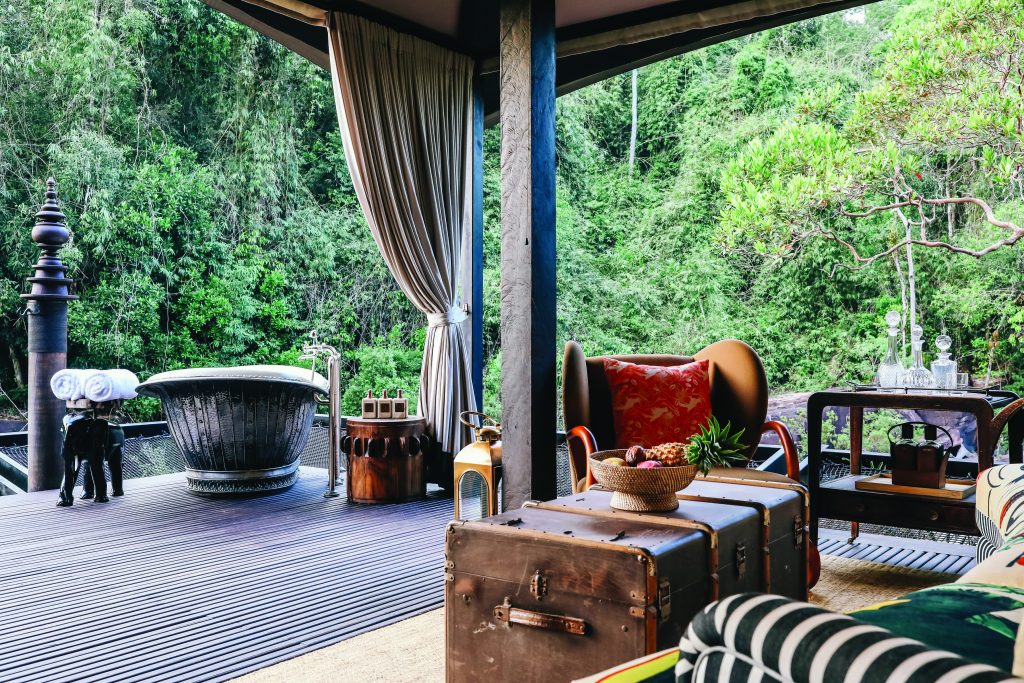
Adventure wonderland
The real beauty of the place though is the intimate encounters with nature and the work the resort does with the community.
The pathways between the villas and everywhere else in the property are paved with gravel and stone and follow the natural contours of the undulating terrain. There are no buggies and the nightly walk to dinner and back are escorted by butlers with electric lamps.
Every villa had a Bensley Butler, who coordinates with the others to ensure that all the guests’ daily programmes run like clockwork. Mine was the amazing head butler Bong Mac (“Bong” being a polite greeting) who brought me on educational butterfly-spotting walks and cheered me on to complete my maiden 5km mountain bike trail with encouraging exclamations of “Come come, just a bit more!” We kayaked down a beautifully calm and peaceful mangrove river and high-fived each other whenever we successfully manoeuvre ourselves out of tight spots.
Whenever I looked tired, cold towels and a flask of iced water would magically appear. At the end of each day, I could count on a massage or facial treatment waiting to ease my sore calves and moisturise my sun-blazed face. I also learnt tenkara, the Japanese meditative art of fly-fishing from Tolga, Bensley’s personal fly fishing guide whenever Bensley visits Mongolia, and who is only at Wild every December and January.
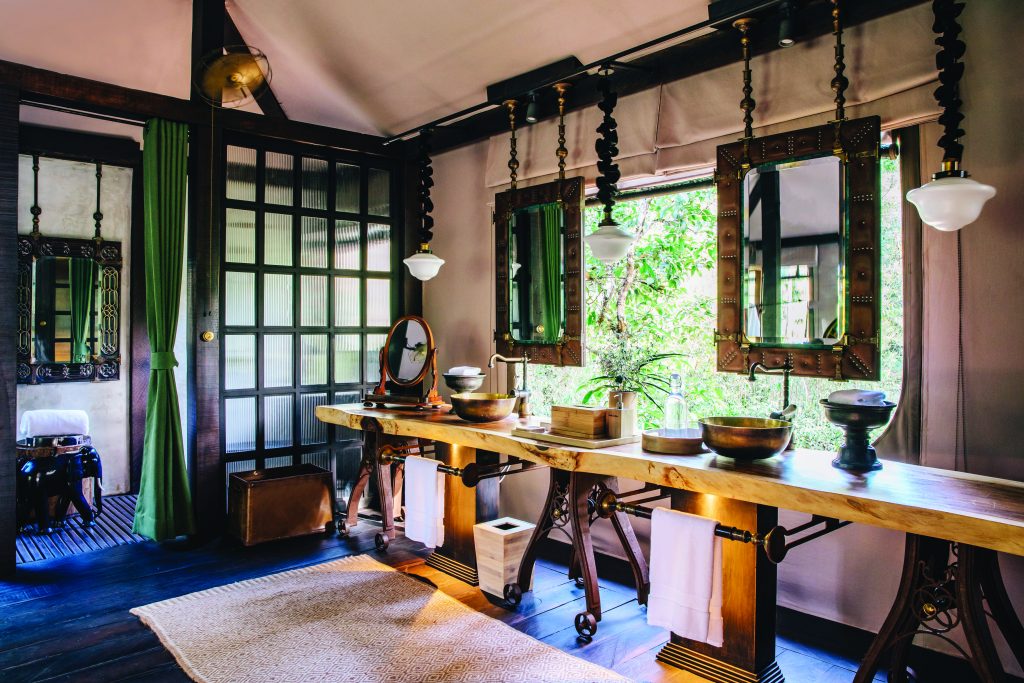
Conservation efforts
Shinta Mani Foundation, the community arm of the Shinta Mani hotel group, works with the non-profit Wildlife Alliance (WA) and the Cambodian government to conserve the surrounding national parks, which spreads over four million hectares. I went along with the WA rangers on one of their patrols, where we cut through dense undergrowth in search of signs of illegal poaching and logging. I was drenched in perspiration and exhausted after two hours, and could not imagine how these rangers do these daily for 10 hours. They go out in groups of six or seven, braving danger as they face hostile poachers and locals who see this as a threat to their livelihood. Civet cats, for instance, can command up to a lucrative US$100 per live one caught. But there have been rewards. Many of the villagers who used to cut down trees and trap animals for a living are now working at Wild.
Munny, Wild’s head naturalist, whose main job is to learn more about animal and plant species in this area, shared footage from his camera traps on an elusive dhole, a wild dog native to central, south and Southeast Asia that he has been tracking. He says, “We have also found endangered species such as the gibbon, green peacock and hornbills, and even new species of orchids. This place is a good hot spot for conservation.” With the resort staking its claim on the land and taking responsibility for nature here, the chances of survival for these endangered species are much higher.
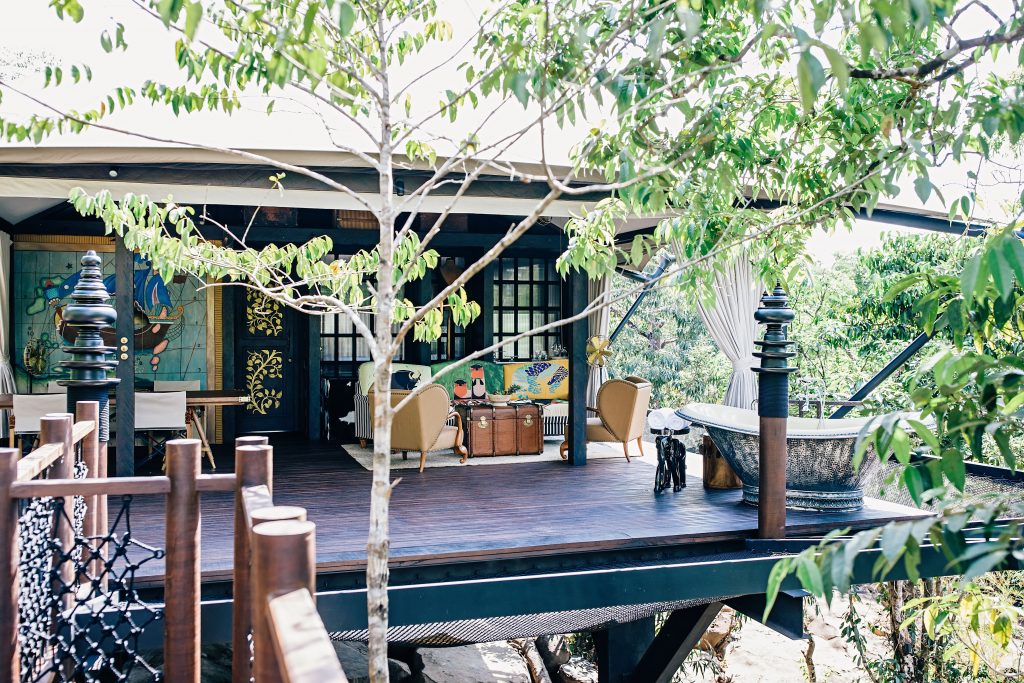
Local bounty
And almost like a reciprocal gesture, the fertile forests and fields yield their bounty in the form of herbs, plants, and fruits, which land on my dining plates in delicious forms: salads of foraged greens; koko soup of sweet vegetables, quail and the soft inside stem of the rattan plant; crispy red fish served with Khmer cabbage and sauces made from local fruits and herbs; elegant chocolate dessert made from cacao beans bought from the local market. Every meal was on point with equally creative cocktails inspired by the different parts of a plant from the roots to the flowers, such as the subtly aromatic Leaf Cocktail using Seekers Dry Gin, kaffir lime, basil and egg white.
I followed sous chef Ly Lous on a foraging excursion and discovered that red ants can be eaten stir-fried or in soup, and their eggs used for salad. We plucked potato leaves, cashew leaves and fruits, and green kuy fruits that turn yellow when ripe and used to make sorbets.
Recently added activities include expedition boats with sun loungers and mini bars plying the wider waterways, as well as cocktails and picnics by the waterfall where you can relax at the edge of mighty rushing waters and take a plunge into the cool waters. Sunset cruises and khao tom congee breakfasts by the rocks? I’m coming back for you soon, I promise.



